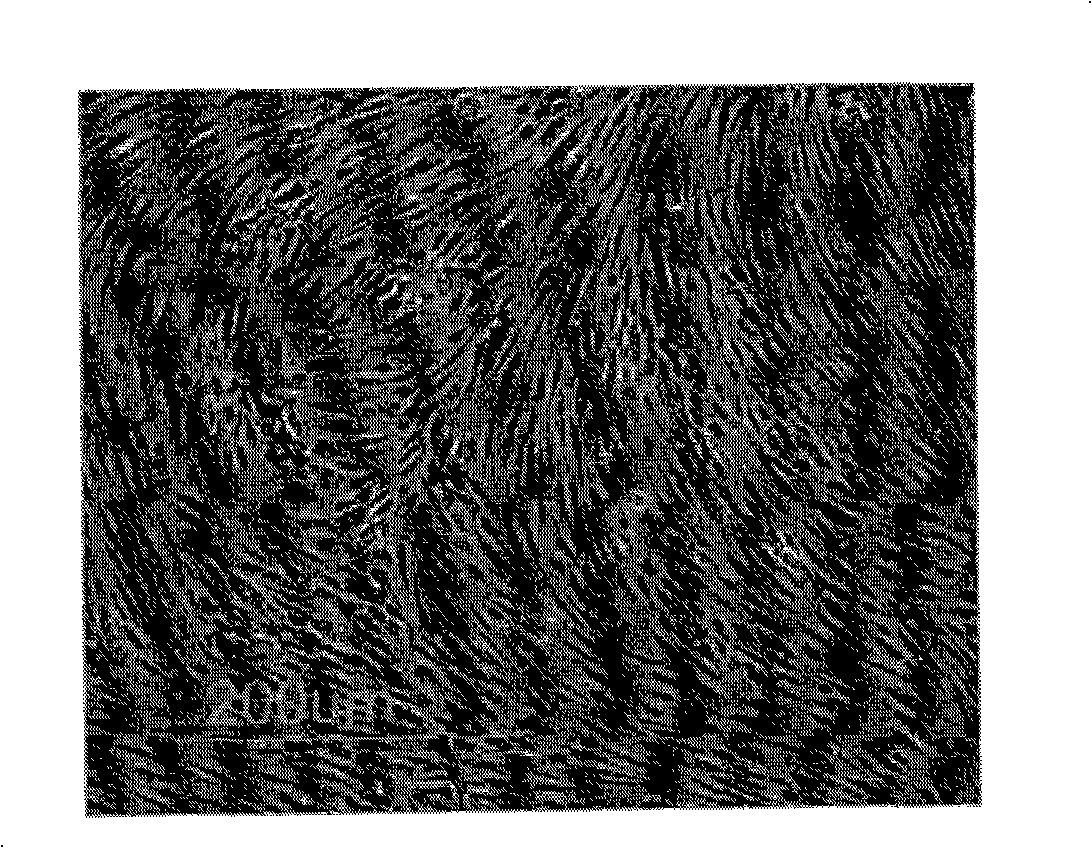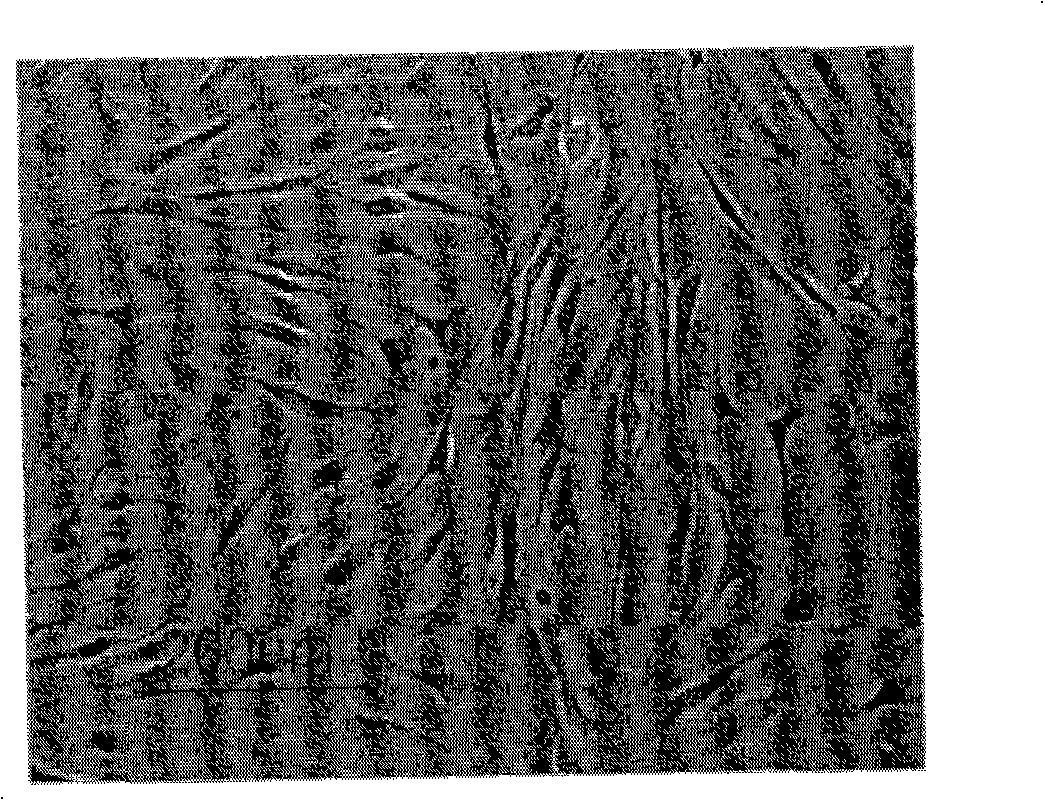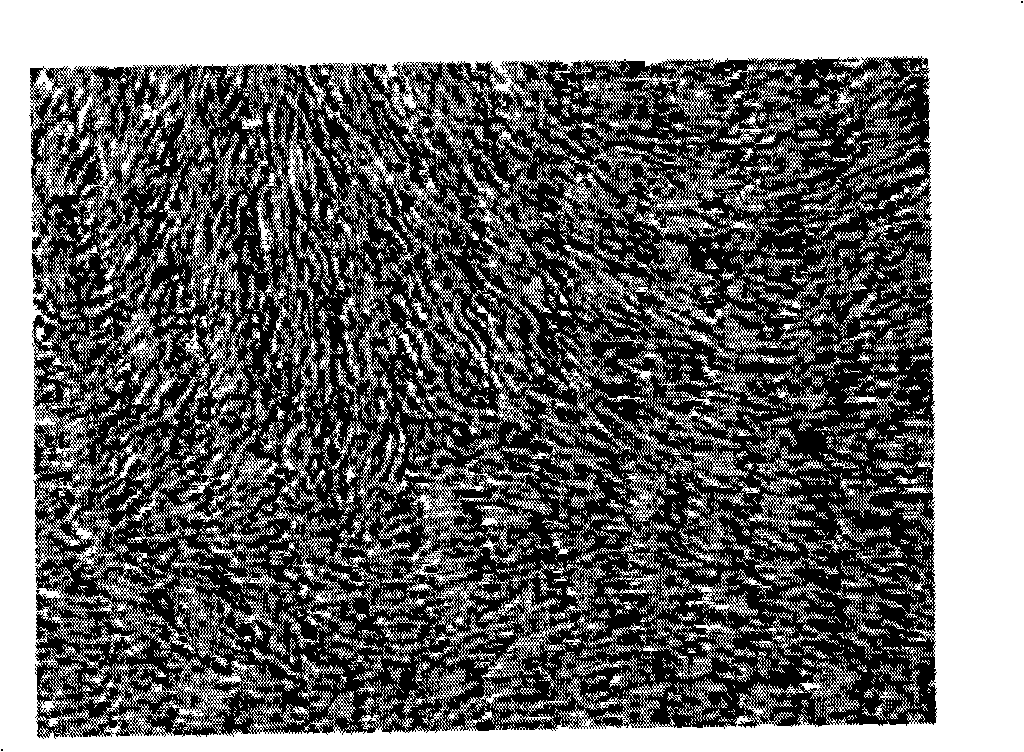Tissue engineering tendon and vitro construction method thereof
A tissue engineering and tendon technology, applied in the fields of medicine and biomedical engineering, can solve the problems of poor seed cell survival, inability to accurately measure the magnitude and frequency of tension, and inability to obtain a high success rate.
- Summary
- Abstract
- Description
- Claims
- Application Information
AI Technical Summary
Problems solved by technology
Method used
Image
Examples
Embodiment 1
[0111] Isolation and culture of skin fibroblasts
[0112] The foreskin tissue discarded during the operation was taken under aseptic conditions and cut into 2×2×2mm 3 Large and small tissue pieces were washed twice with phosphate buffer (PBS, containing 100 U / ml each of penicillin and streptomycin), and double volume of 1 mg / ml type II collagenase (purchased from Worthington, Freehold, NJ, USA) was added. Digest in a constant temperature shaker at 37°C for 4 hours, filter and centrifuge with a 150-mesh nylon mesh, wash the precipitated cells twice with PBS, count them, and check the viability of fibroblasts by staining with trypan blue at 1×10 6 / dish density (petri dish diameter 100mm) culture cell, culture fluid is DMEM (purchased from Gibco, Gland, Island, NY, USA) containing 10% fetal bovine serum, L-glutamine 300ug / ml, vitamin C50ug / ml, Each of penicillin and streptomycin was 100U / ml, and the fibroblasts were transferred to the second generation, and the cells were coll...
Embodiment 2
[0114] Isolation and culture of tenocytes
[0115] Under aseptic conditions, take the discarded human tendon tissue after fresh amputation and cut it into 2×2×2mm 3The large and small tissue pieces were washed twice with phosphate buffer solution (PBS, containing 100 U / ml each of penicillin and streptomycin), and added double volume of 0.25 mg / ml type II collagenase (purchased from Worthington, Freehold, NJ, USA) , placed in a constant temperature shaker at 37°C for digestion, after 4, 5, and 7 hours respectively, filter and centrifuge with a 150-mesh nylon mesh, wash the precipitated cells twice with PBS and count, trypan blue staining to check the viability of tenocytes, with 1× 10 6 / dish density (petri dish diameter 100mm) culture cell, culture fluid is DMEM (purchased from Gibco, Gland, Island, NY, USA) containing 10% fetal bovine serum, L-glutamine 300ug / ml, vitamin C50ug / ml, Penicillin, streptomycin each 100U / ml, tenocytes passed to the second generation, digested wi...
Embodiment 3
[0117] Isolation and culture of adipose-derived cells
[0118] Under aseptic conditions, the discarded human tendon tissue after liposuction was transferred to a culture bottle, rinsed repeatedly with normal saline, and an equal volume of 0.075% type I collagenase (purchased from Worthington, Freehold, NJ, USA) was added. , placed in a constant temperature shaker at 37°C for digestion, and after 1 hour, centrifuge at 300g for 10 minutes to obtain a high-density cell pellet, discard the supernatant and floating adipose tissue, shake the cells, and count them as 1×10 6 Cells were cultured at a density of 1 / dish (petri dish diameter 100 mm), and the culture medium was DMEM (purchased from Gibco, Gland, Island, NY, USA) containing 10% fetal bovine serum, placed in a room at 37° C., 5% CO 2 , and 100% saturated humidity. cultured under the same conditions, the medium was changed for the first time after 24 hours, the floating cells were washed repeatedly with PBS, and the culture m...
PUM
 Login to View More
Login to View More Abstract
Description
Claims
Application Information
 Login to View More
Login to View More - R&D
- Intellectual Property
- Life Sciences
- Materials
- Tech Scout
- Unparalleled Data Quality
- Higher Quality Content
- 60% Fewer Hallucinations
Browse by: Latest US Patents, China's latest patents, Technical Efficacy Thesaurus, Application Domain, Technology Topic, Popular Technical Reports.
© 2025 PatSnap. All rights reserved.Legal|Privacy policy|Modern Slavery Act Transparency Statement|Sitemap|About US| Contact US: help@patsnap.com



